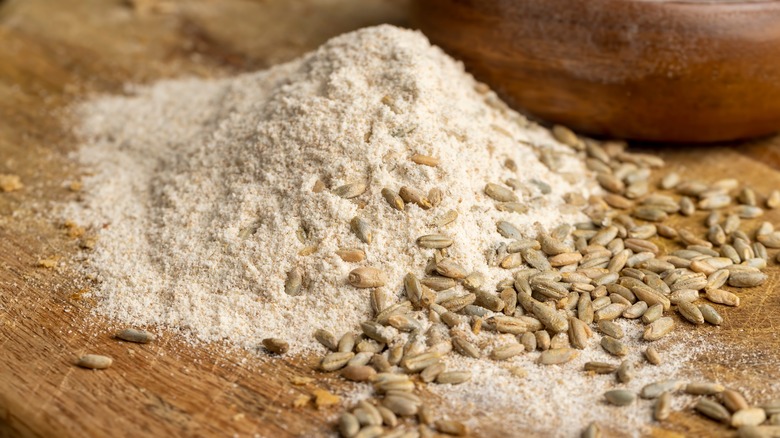Why Baking With Old Whole Wheat Flour Is A Big Flavor Mistake
Whole wheat flour, with its earthy richness and health benefits, is a staple in many kitchens. However, unlike its refined counterpart, all-purpose flour, whole wheat flour has a shorter shelf life. Baking with old or stale whole wheat flour can lead to disappointing results, with a bitter taste and subpar texture. Here's why it's essential to prioritize freshness when working with this nutritious baking staple.
Whole wheat flour is created by grinding the entire wheat kernel, including the bran, germ, and endosperm. While this process preserves the grain's nutritional value, it also means that all three components are present, including the bran. This bran contains oils that can turn rancid over time, leading to spoilage.
One of the telltale signs of old or stale whole wheat flour is its bitter taste. As the bran in the flour becomes rancid, it imparts an unpleasant bitterness to your baked goods. This bitterness can overpower the natural flavors of your recipes and leave a less-than-pleasant aftertaste.
How to tell if whole wheat flour is bad
Fortunately, there are some key indicators to help you identify if your whole wheat flour has gone bad. Fresh whole wheat flour has a mild, slightly nutty aroma. If your flour smells rancid or unpleasant, it's likely past its prime. If you've used the flour in a recipe and notice a bitter or off-putting taste in your baked goods, that's unfortunately also a strong indication your flour has gone bad. Whole wheat flour should have a fine, powdery consistency — if it's too old, it may become clumpy or develop an odd texture. While whole wheat flour naturally has a darker color compared to all-purpose flour, if you notice any unusual discoloration, such as a grayish or speckled appearance, it's a sign of spoilage.
To ensure your whole wheat flour stays fresh for longer, consider storing it in an airtight container in a cool, dark place. Avoid exposing it to heat, humidity, or direct sunlight. Use whole wheat flour regularly to ensure that it's always fresh. If you don't bake with it often, consider buying smaller quantities. For extended shelf life, you can refrigerate or freeze whole wheat flour. Just make sure it's well-sealed to prevent moisture and odors from affecting it.
By following proper storage practices and keeping an eye out for telltale signs of spoilage, you can ensure that your whole wheat flour consistently contributes its wholesome goodness to your recipes.

